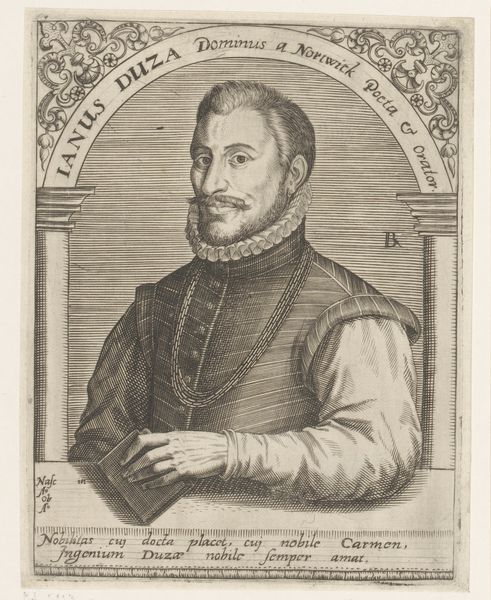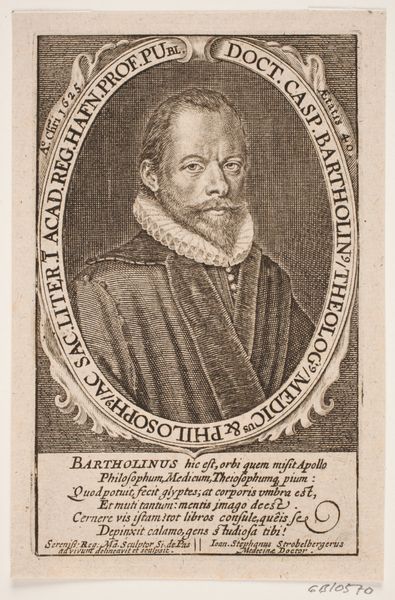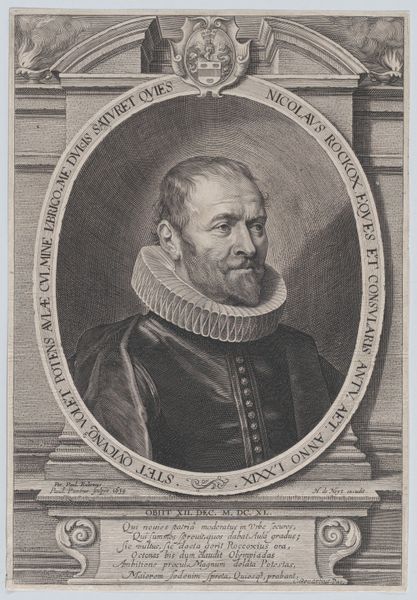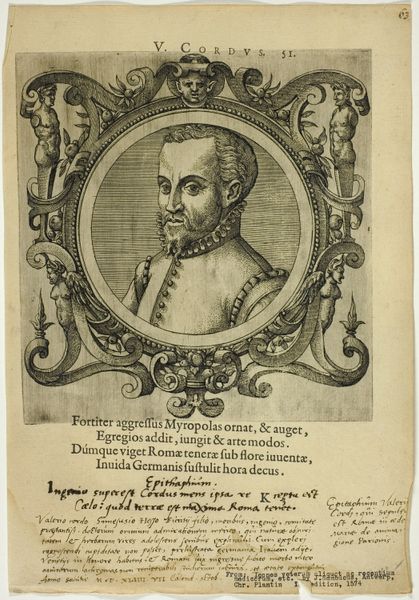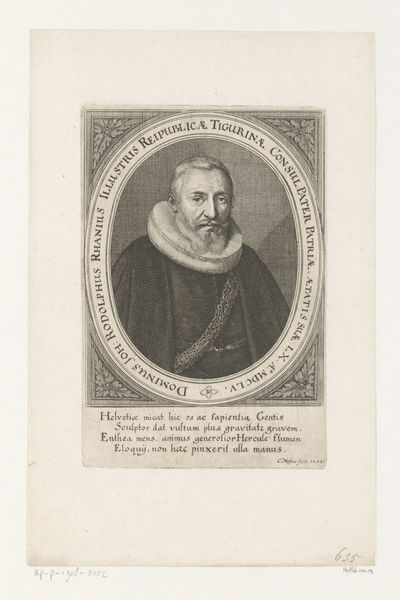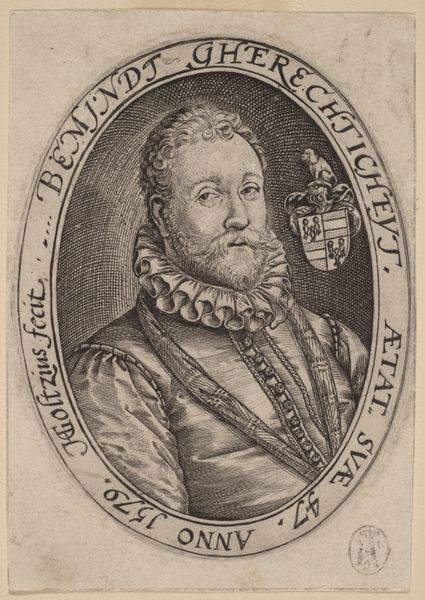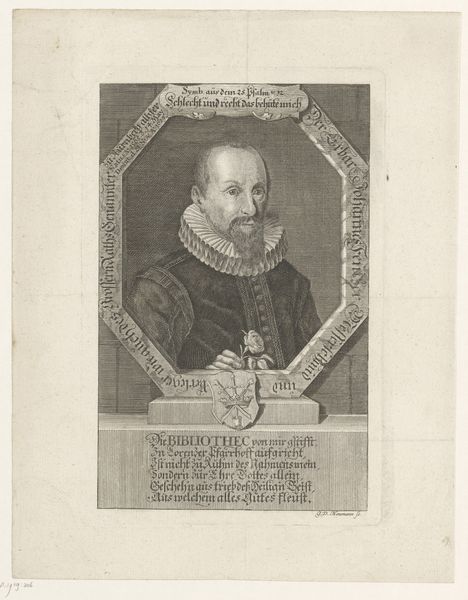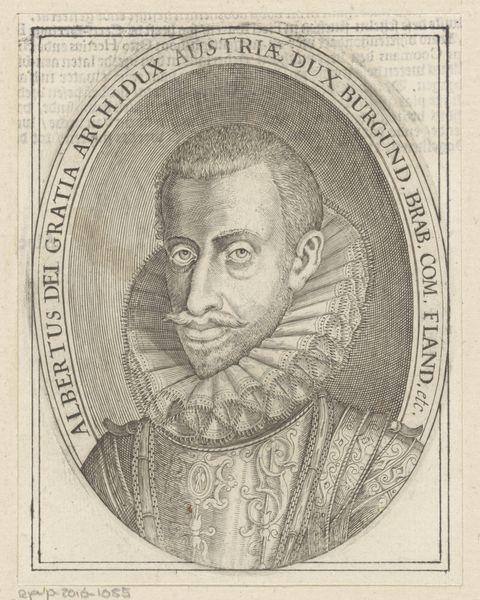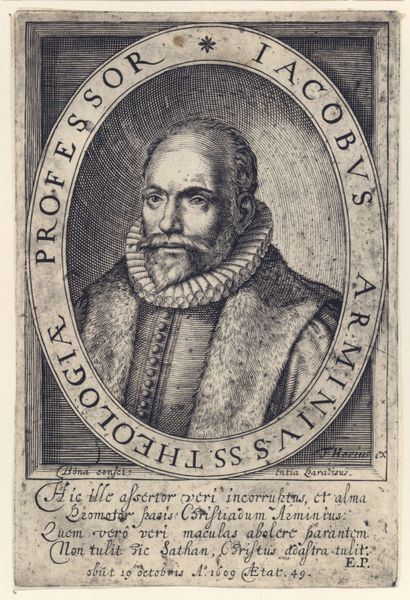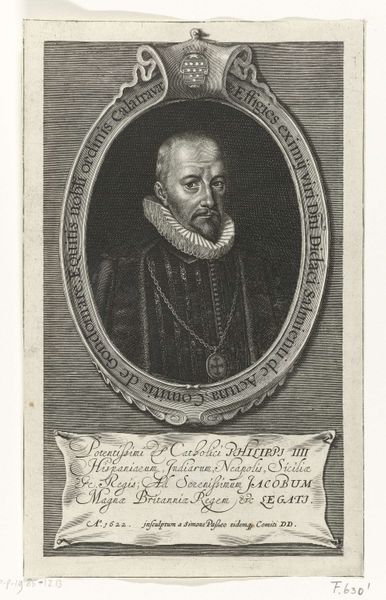
drawing, graphic-art, print, ink, engraving
portrait
drawing
graphic-art
baroque
old engraving style
ink
men
engraving
Dimensions: Plate: 6 3/16 × 4 1/8 in. (15.7 × 10.5 cm) Sheet: 6 13/16 × 4 3/4 in. (17.3 × 12 cm)
Copyright: Public Domain
Editor: We are looking at Bernardino Capitelli’s “Portrait of Alessandro Casolani,” an engraving from 1634, housed at the Met. The intricacy of the lines that define the face is captivating. It has a formal almost stoic aura. I’m curious, what strikes you when you view this portrait, and how might the historical context shape our understanding? Curator: What immediately grabs me is how this portrait serves as both a commemoration and a promotion. Engravings like these circulated widely. Consider that this was produced during the Baroque era, a period of intense religious and political maneuvering. Artists' reputations, and therefore their livelihoods, often depended on patronage and public image. Notice how the inscription identifies Casolani as "pictor senen" a painter from Siena; why is his city important to highlight? Editor: So, identifying him as a Sienese painter gives him legitimacy and potentially aligns him with a specific artistic tradition or clientele, is that right? Does the inscription beneath contribute similarly to establishing his status? Curator: Precisely! The inscription is crucial. In Latin, it speaks to Casolani’s skill in depicting sacred figures. It elevates the artist by associating him with divine representation, thus legitimizing both his artistic talent and perhaps even aligning him with certain religious viewpoints favorable for patronage. How does that tie in with the public's perception of artists during this period? Editor: I see. The image works as marketing and propaganda in a way, simultaneously celebrating individual artistry and bolstering specific ideological positions in society. Thanks to your insight, I appreciate how deeply enmeshed art was with power structures during this period, something a casual glance wouldn't reveal. Curator: And I'm reminded of how crucial distribution and textual accompaniment were for interpreting these portraits in the period they were created, especially as they became political tools of propaganda and power.
Comments
No comments
Be the first to comment and join the conversation on the ultimate creative platform.
